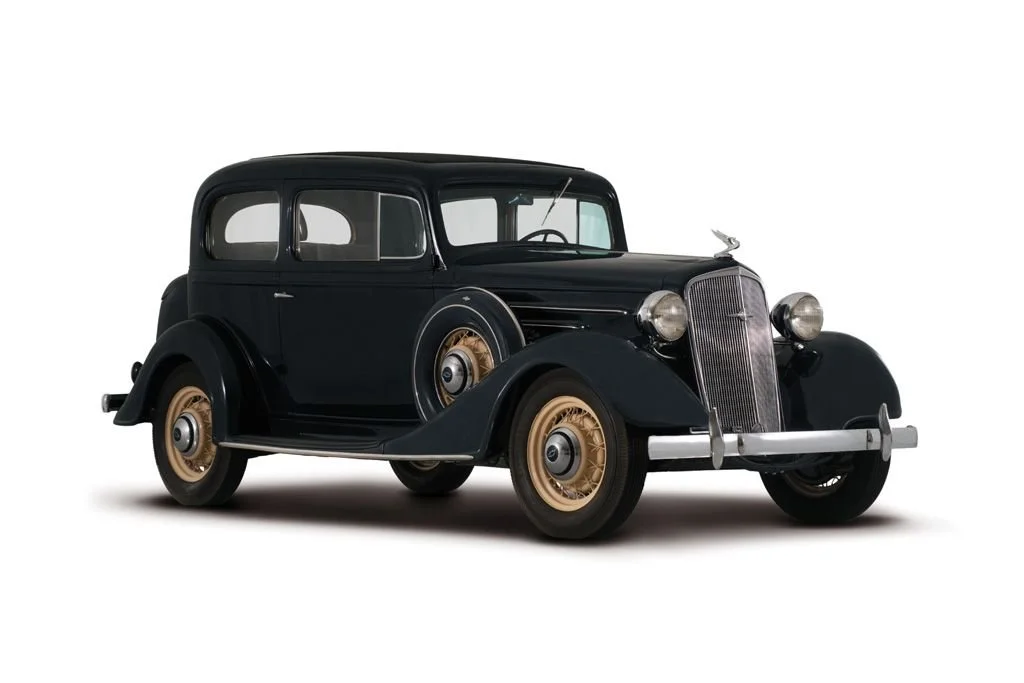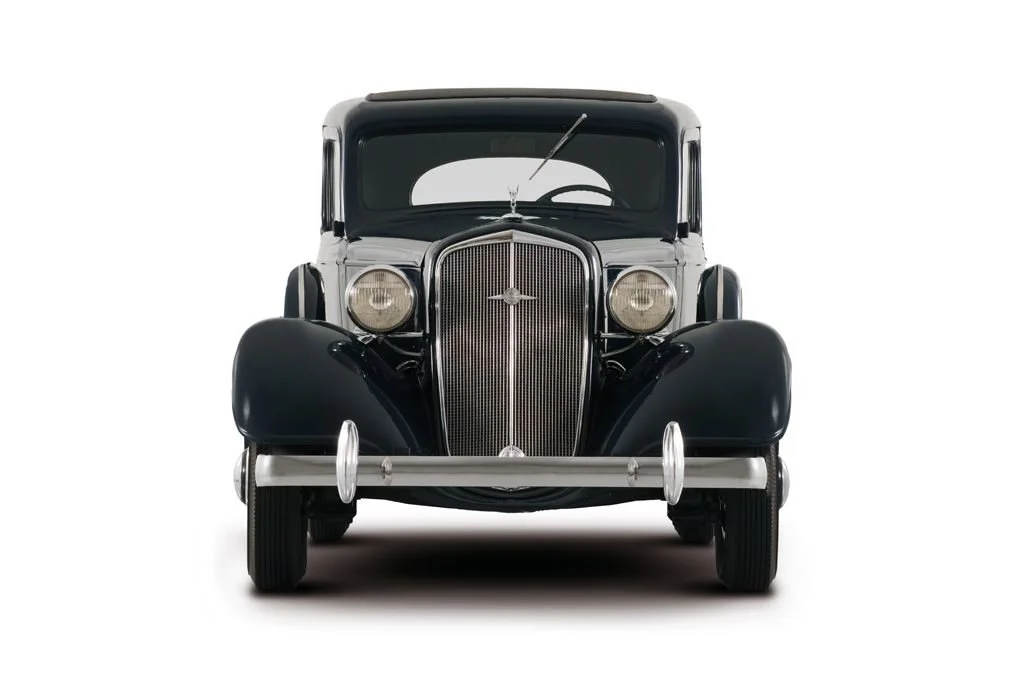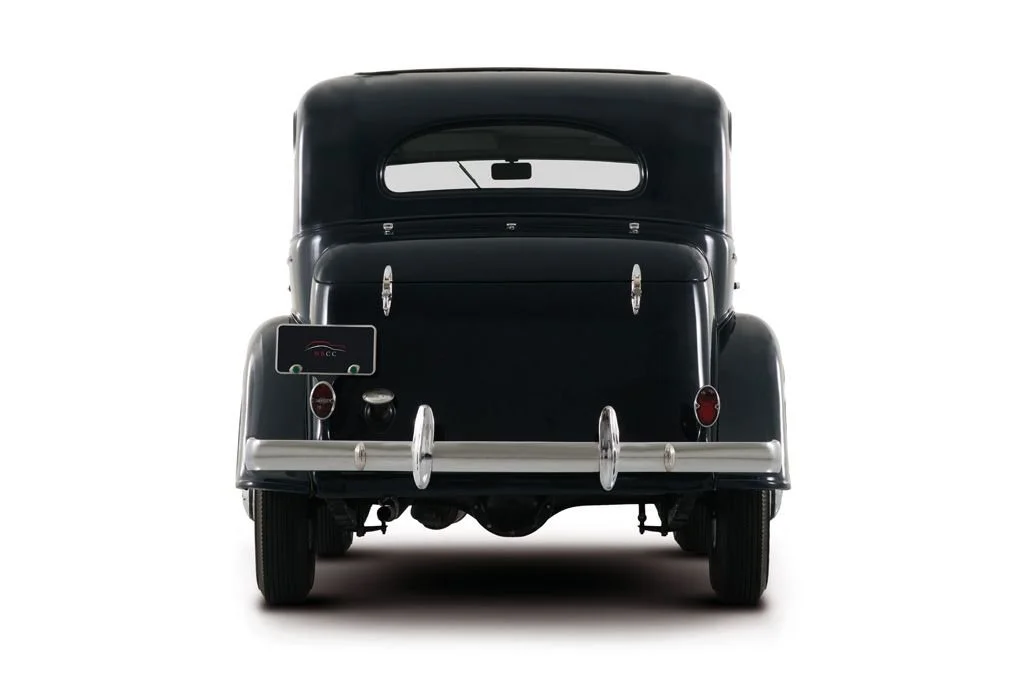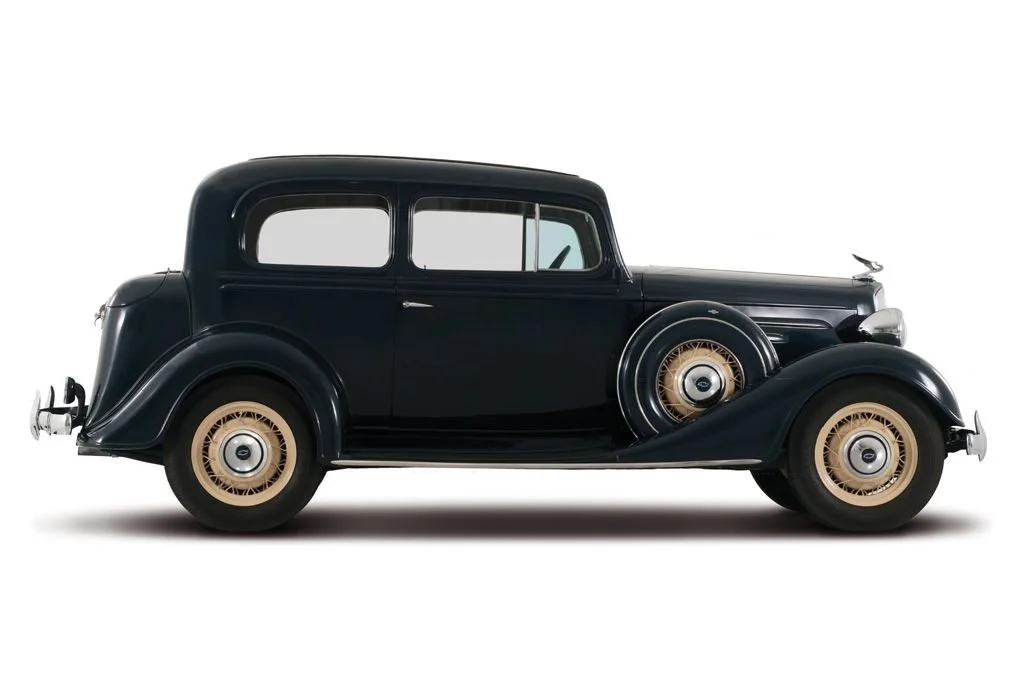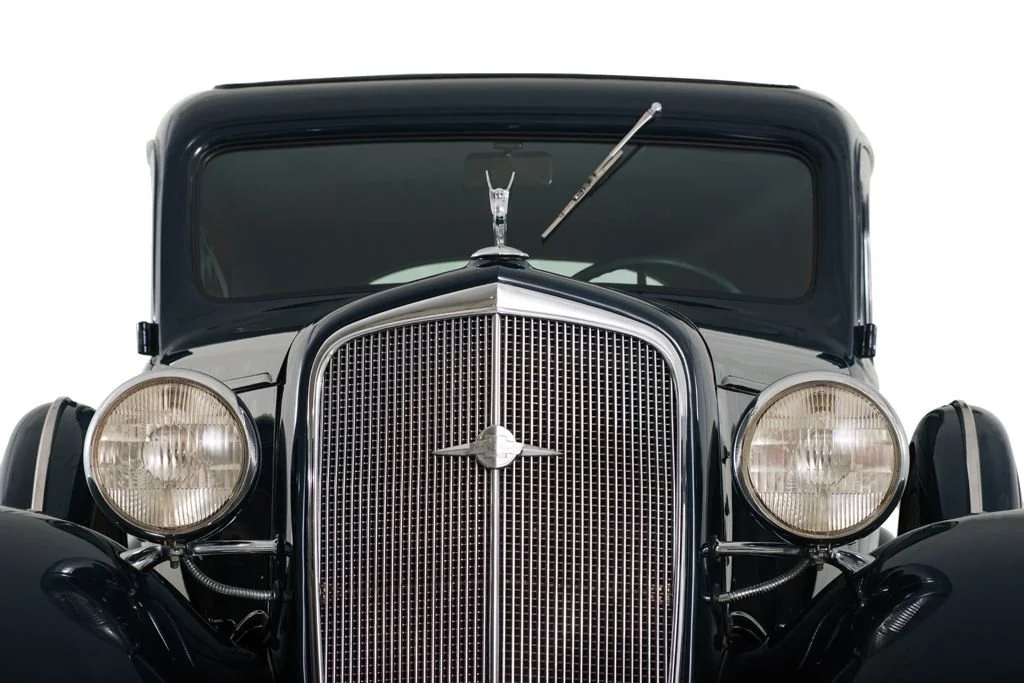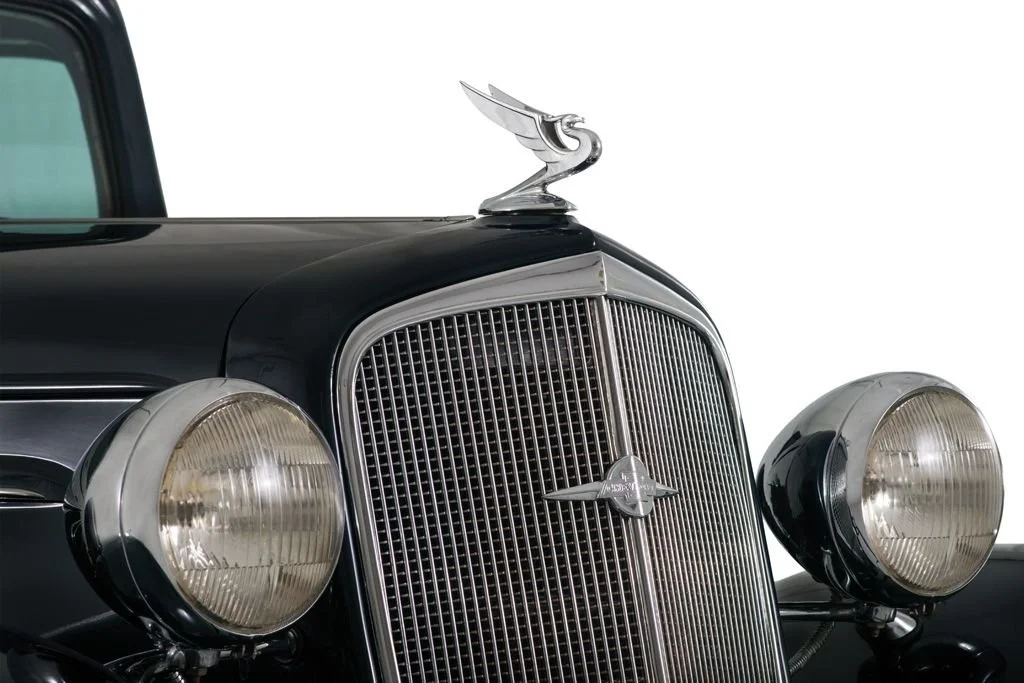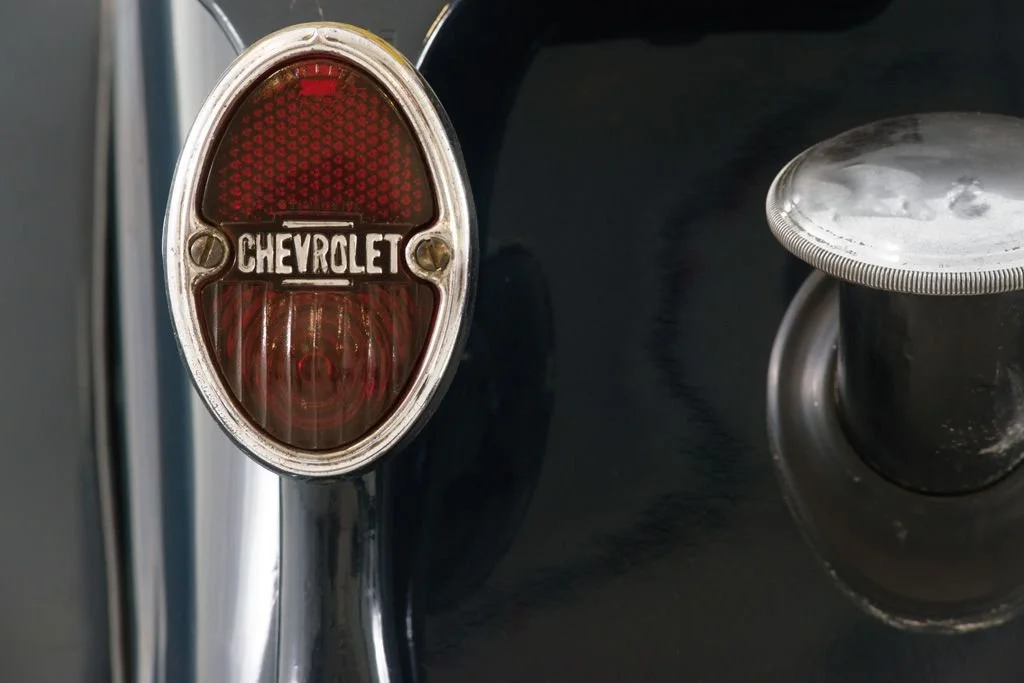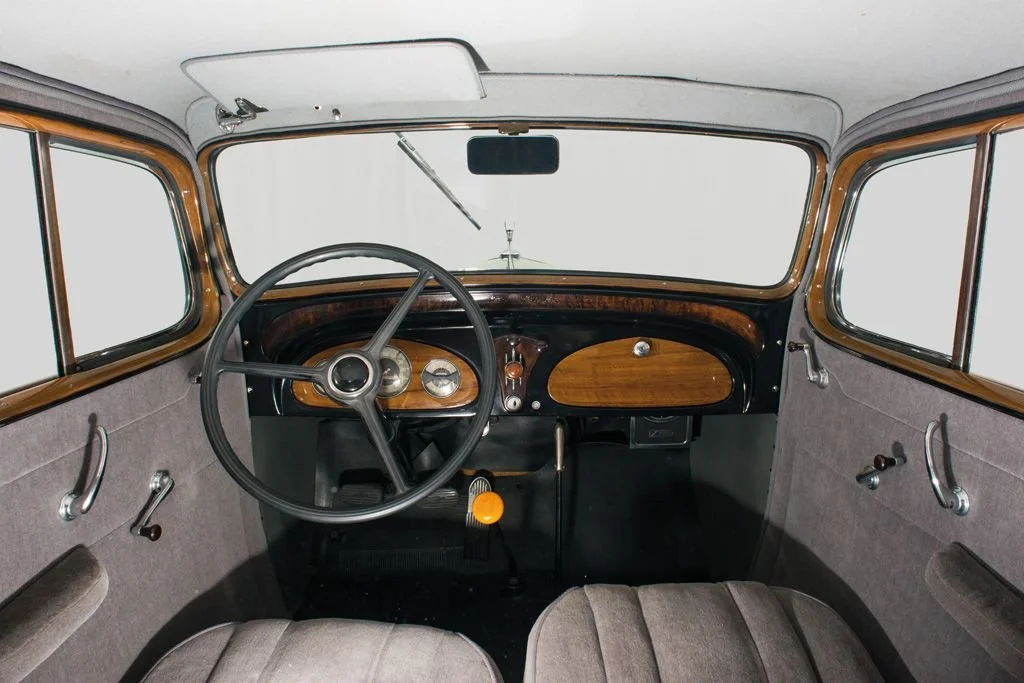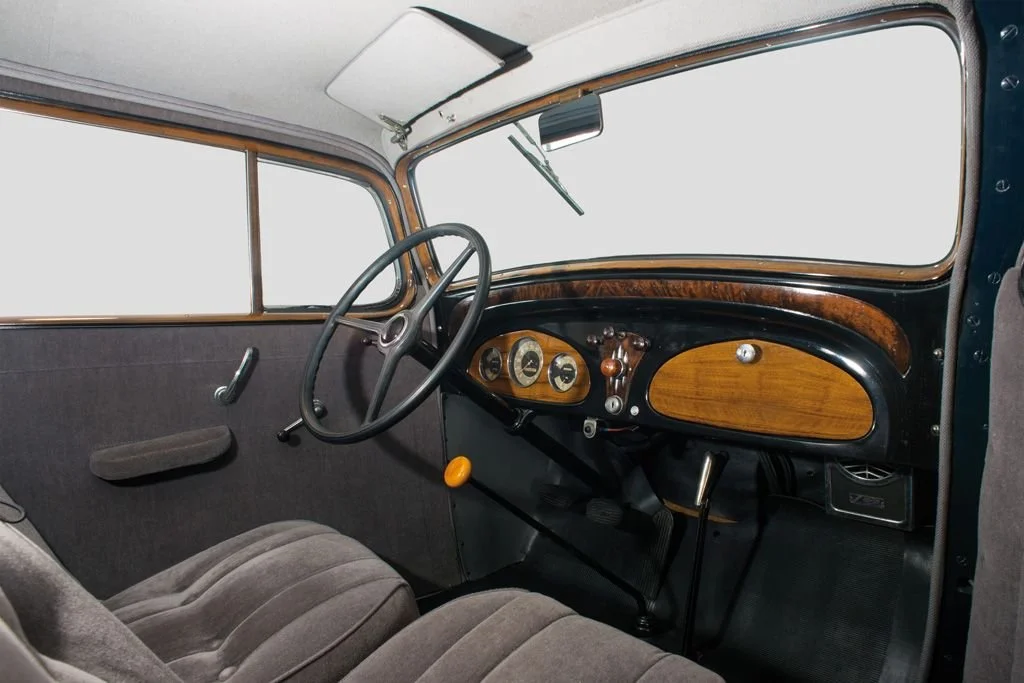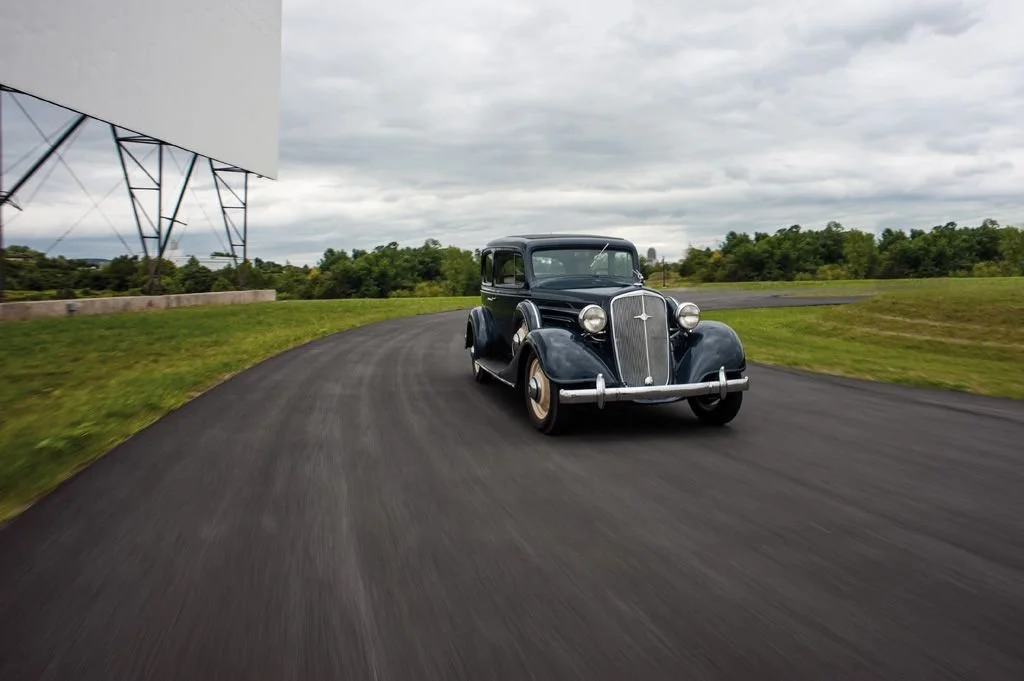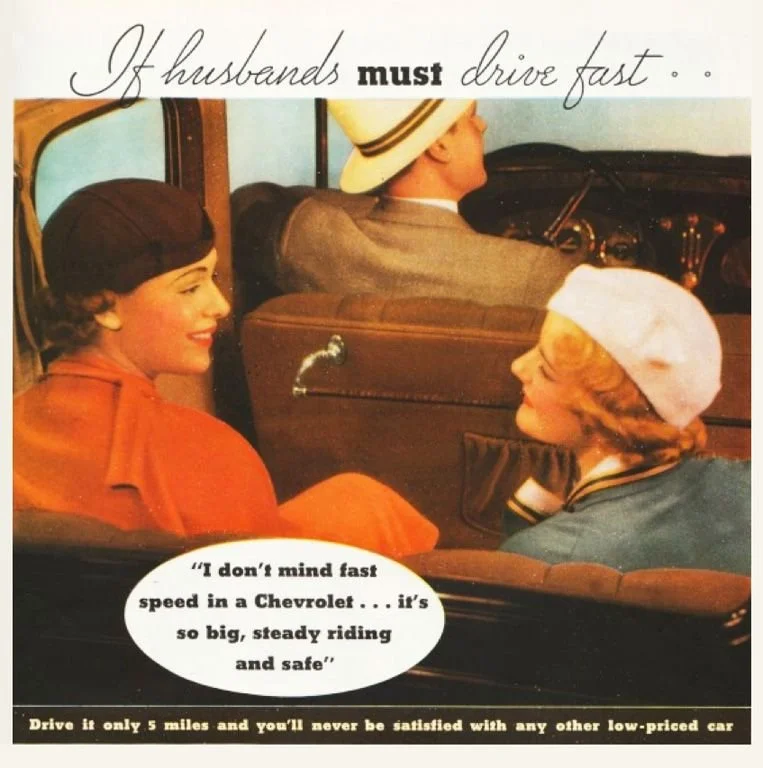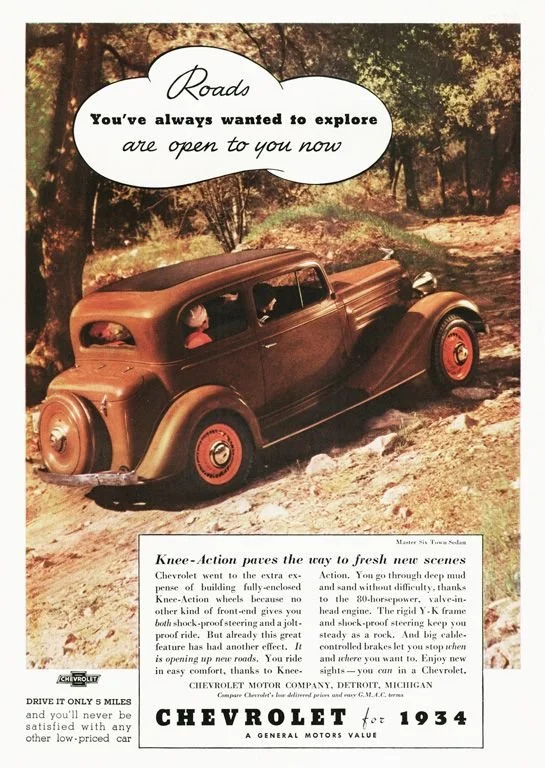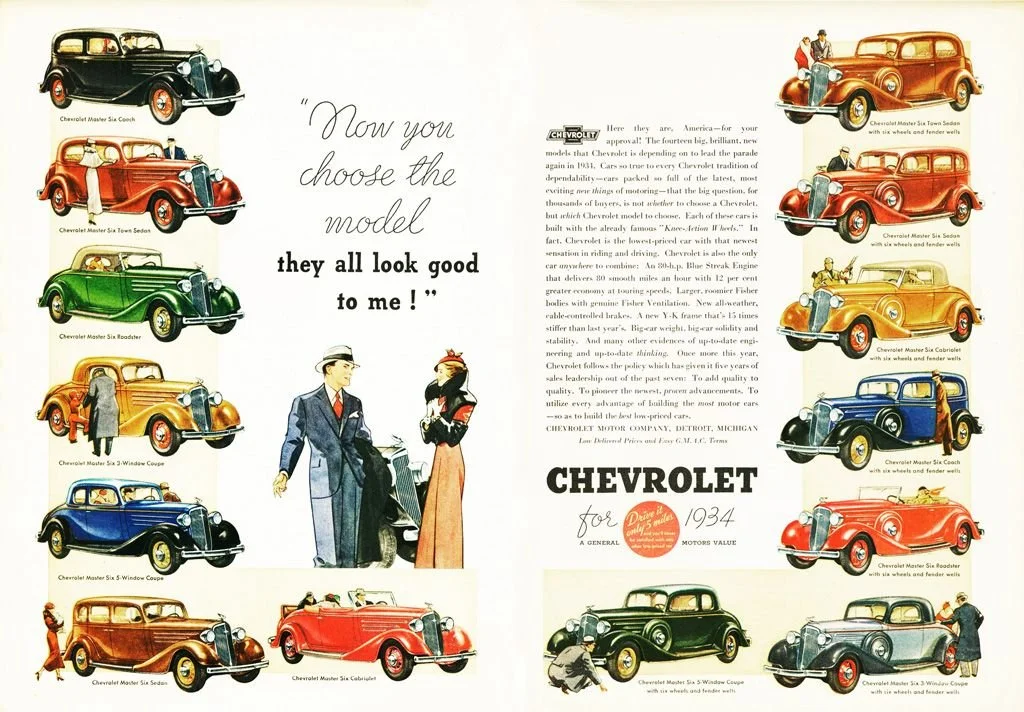-
You cannot tell the story of the American automobile industry, especially during the Great Depression, without including the entry level cars that came to define the market during this period. The Ford and Chevrolet rivalry and the spin-off lower priced cars from Buick, Nash, Hudson, Packard and others changed the industry starting in the early 1930’s.
This Chevrolet was added to The NB Center collection when it was purchased at an Auburn Fall auction run by Auctions America in September 2012. At the time of acquisition, the car had just been completely restored.
This Master Six 2-door Town Sedan was equipped with the optional dual fender wells, a spare tire and wheel mounted in the fenders on either side of the car. This was a $30 option, an unusual extravagance for a Chevrolet at the time. The Town model, unlike the other Masters, had an integrated bustle back trunk, a fairly new innovation at the time. -
Company
General Motors
Make
Chevrolet
Model
Master Six DA
Body Style
Town Sedan , 2-door, 5-pass.
Body Manufacture
Fisher Body Company
Model year
1934
Wheelbase
112 inches
Length
N/A
Engine
inline-6, OHV, , 206.8 cid
Horsepower
80 @ 3300 rpm
Transmission
3-speed manual
Original Base Price
$615
Brand Production
551,191
This Car Production
49,431 -
The rivalry between Chevrolet and Ford dates back to 1927, the first year that Chevrolet outproduced and outsold Ford. The two brands would duke it out year after year to see who could sell more cars and claim to be the favorite car brand in America. The onset of the Great Depression did not slow this rivalry one bit.
The 1934 Chevrolet Master DA Series replaced the 1933 Master Eagle as the top of the line offering from Chevrolet. Two inches longer in wheelbase than in 1933, the Master series was now five inches longer than the entry level Standard series. Prices also jumped significantly from 1933. The Master Town sedan was now priced at $615 versus the previous year’s $545, a nearly 13% price increase.
Mechanically, the 1934 car was an improvement over the 1933 car. A host of engine improvements increased displacement and significantly increased power. Horsepower was now rated at 80 compared to the previous year’s 65. New front and rear suspension improved ride and handling.
The styling was updated, although the basic bodies remained the same. Now the cars sported a stylish V-type radiator and grille. Three horizontal hood louvers, higher crown fenders, skirted front fender sides and wheel size reduced to 17 inches, all of which gave the car a fresh modern appearance.
The Chevrolet and the Ford were clearly close competitors. The DA series Chevrolet and the Ford V8 had the same wheelbase, similar horsepower and similar styling. The big difference was in price. The equivalent to the Chevrolet Town Sedan at Ford was the Tudor and it was priced at $535.
In 1933 Chevrolet was the industry production leader with 486,261 cars out the factory doors. That number increased to 551,191 in 1934. Unfortunately for them, Ford saw its sales go up even more year-over-year and they took the top spot in 1934 with 563,921 cars produced.
To put the sales figures into perspective, Chevrolet and Ford combined sales in 1934 were higher than the next 10 companies combined.

